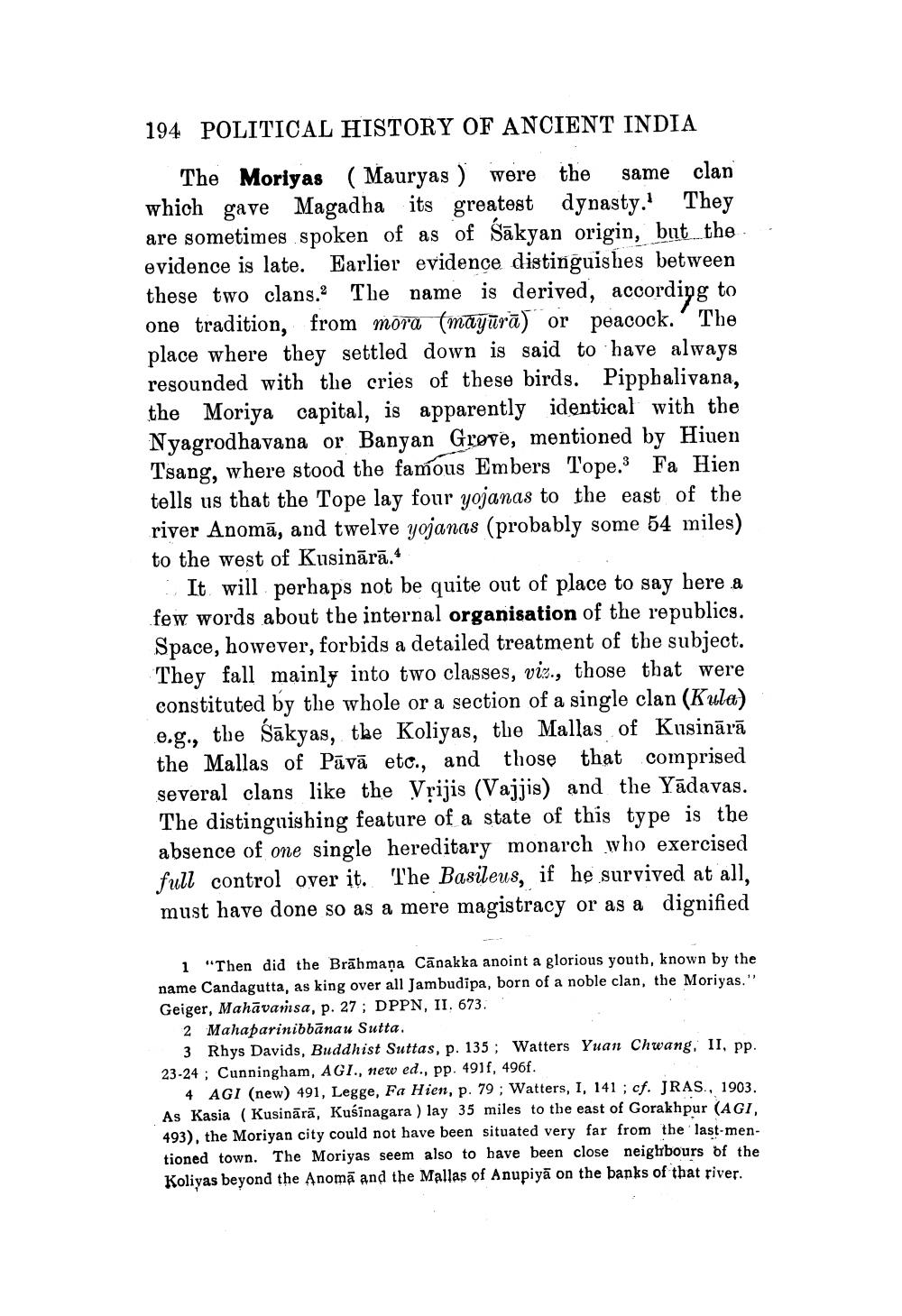________________
194 POLITICAL HISTORY OF ANCIENT INDIA
The Moriyas (Mauryas ) were the same clan which gave Magadha its greatest dynasty. They are sometimes spoken of as of Sākyan origin, but the evidence is late. Earlier evidence distinguishes between these two clans. The name is derived, according to one tradition, from mora (māyārā) or peacock. The place where they settled down is said to have always resounded with the cries of these birds. Pipphalivana, the Moriya capital, is apparently identical with the Nyagrodhavana or Banyan Grove, mentioned by Hiuen Tsang, where stood the famous Embers Tope. Fa Hien tells us that the Tope lay four yojanas to the east of the river Anomā, and twelve yojanas (probably some 54 miles) to the west of Kusinārā.
- It will perhaps not be quite out of place to say here a few words about the internal organisation of the republics. Space, however, forbids a detailed treatment of the subject. They fall mainly into two classes, viz., those that were constituted by the whole or a section of a single clan (Kula) e.g., the sākyas, the Koliyas, the Mallas of Kusinārā the Mallas of Pāvā etc., and those that comprised several clans like the Vrijis (Vajjis) and the Yādavas. The distinguishing feature of a state of this type is the absence of one single hereditary monarch who exercised full control over it. The Basileus, if he survived at all, must have done so as a mere magistracy or as a dignified
1 "Then did the Brāhmaṇa Cānakka anoint a glorious youth, known by the name Candagutta, as king over all Jambudipa, born of a noble clan, the Moriyas." Geiger, Mahāvamsa, p. 27; DPPN, II. 673.
2 Mahaparinibbānau Sutta.
3 Rhys Davids, Buddhist Suttas, p. 135; Watters Yuan Chwang. II, pp. 23-24 ; Cunningham, AGI., new ed., pp. 491f, 496f.
4 AGI (new) 491, Legge, Fa Hien, p. 79; Watters, I, 141 ; cf. JRAS., 1903. As Kasia (Kusinārā, Kusinagara ) lay 35 miles to the east of Gorakhpur (AGI, 493), the Moriyan city could not have been situated very far from the last-mentioned town. The Moriyas seem also to have been close neighbours of the Koliyas beyond the Anomā and the Mallas of Anupiyā on the banks of that river.




